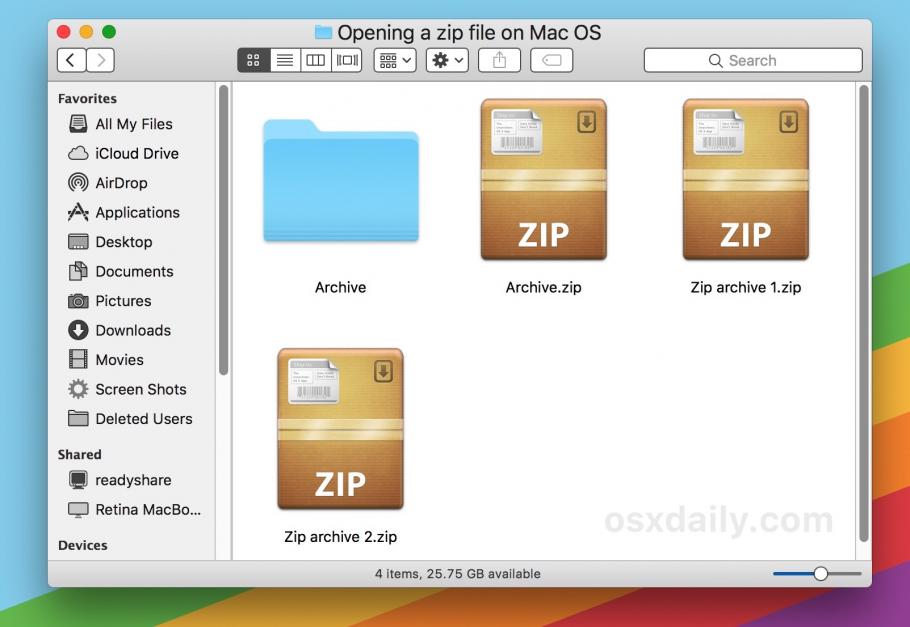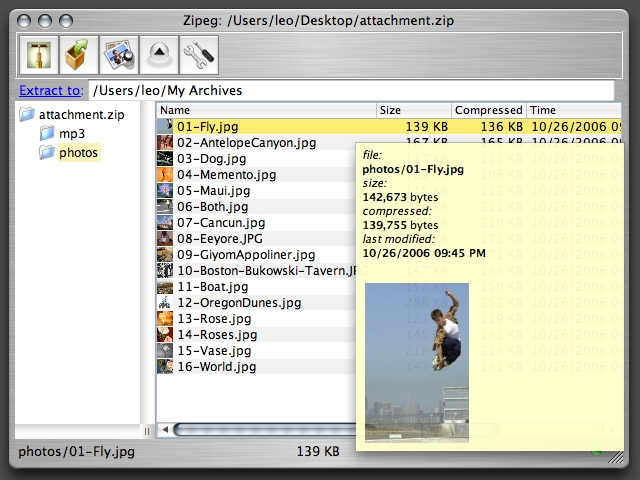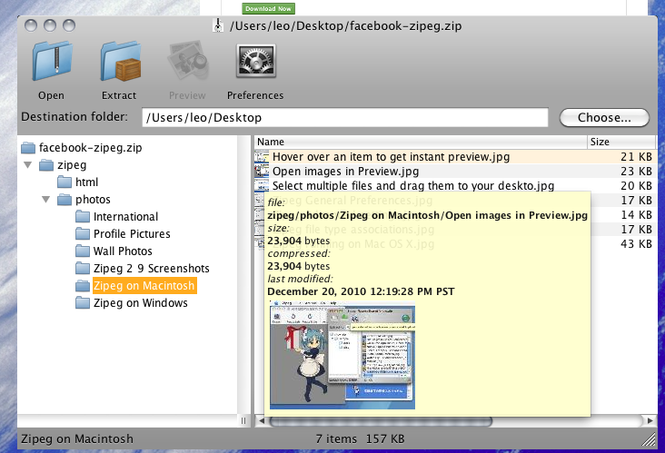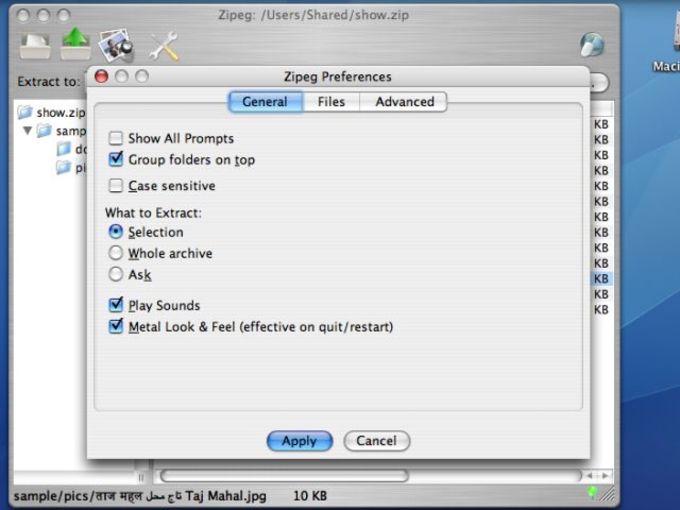To make best use of computer resources FlexiHub is a must have software for mid to large scale. Zipeg opens and explores content of zip, rar, arj and other archives, preview files and images before you extract/unzip them. Extract only the files you want. Many documents and pictures such as jpeg files are emailed as zip archives. Zipeg allows you to decide what do you want to extract before your pollute your disk with gazillions of items.
Winrar Download Mac Os X RAR for Mac is a light-weight pressure device for Macs, that will unpack most typical compressed file formats like ZIP and Bottle. RAR is an effective archive supervisor.

Unlike the software developed for Windows system, most of the applications installed in Mac OS X generally can be removed with relative ease. Zipeg is a third party application that provides additional functionality to OS X system and enjoys a popularity among Mac users. However, instead of installing it by dragging its icon to the Application folder, uninstalling Zipeg may need you to do more than a simple drag-and-drop to the Trash.
Download Mac App RemoverWhen installed, Zipeg creates files in several locations. Generally, its additional files, such as preference files and application support files, still remains on the hard drive after you delete Zipeg from the Application folder, in case that the next time you decide to reinstall it, the settings of this program still be kept. But if you are trying to uninstall Zipeg in full and free up your disk space, removing all its components is highly necessary. Continue reading this article to learn about the proper methods for uninstalling Zipeg.
Manually uninstall Zipeg step by step:
Most applications in Mac OS X are bundles that contain all, or at least most, of the files needed to run the application, that is to say, they are self-contained. Thus, different from the program uninstall method of using the control panel in Windows, Mac users can easily drag any unwanted application to the Trash and then the removal process is started. Despite that, you should also be aware that removing an unbundled application by moving it into the Trash leave behind some of its components on your Mac. To fully get rid of Zipeg from your Mac, you can manually follow these steps:
1. Terminate Zipeg process(es) via Activity Monitor
Before uninstalling Zipeg, you’d better quit this application and end all its processes. If Zipeg is frozen, you can press Cmd +Opt + Esc, select Zipeg in the pop-up windows and click Force Quit to quit this program (this shortcut for force quit works for the application that appears but not for its hidden processes).

Open Activity Monitor in the Utilities folder in Launchpad, and select All Processes on the drop-down menu at the top of the window. Select the process(es) associated with Zipeg in the list, click Quit Process icon in the left corner of the window, and click Quit in the pop-up dialog box (if that doesn’t work, then try Force Quit).
2. Delete Zipeg application using the Trash

First of all, make sure to log into your Mac with an administrator account, or you will be asked for a password when you try to delete something.
Zipeg Download Mac Os X 10.13
Open the Applications folder in the Finder (if it doesn’t appear in the sidebar, go to the Menu Bar, open the “Go” menu, and select Applications in the list), search for Zipeg application by typing its name in the search field, and then drag it to the Trash (in the dock) to begin the uninstall process. Alternatively you can also click on the Zipeg icon/folder and move it to the Trash by pressing Cmd + Del or choosing the File and Move to Trash commands.
For the applications that are installed from the App Store, you can simply go to the Launchpad, search for the application, click and hold its icon with your mouse button (or hold down the Option key), then the icon will wiggle and show the “X” in its left upper corner. Click the “X” and click Delete in the confirmation dialog.
Download Mac App Remover3. Remove all components related to Zipeg in Finder
Though Zipeg has been deleted to the Trash, its lingering files, logs, caches and other miscellaneous contents may stay on the hard disk. For complete removal of Zipeg, you can manually detect and clean out all components associated with this application. You can search for the relevant names using Spotlight. Those preference files of Zipeg can be found in the Preferences folder within your user’s library folder (~/Library/Preferences) or the system-wide Library located at the root of the system volume (/Library/Preferences/), while the support files are located in '~/Library/Application Support/' or '/Library/Application Support/'.
Open the Finder, go to the Menu Bar, open the “Go” menu, select the entry:|Go to Folder... and then enter the path of the Application Support folder:~/Library
Search for any files or folders with the program’s name or developer’s name in the ~/Library/Preferences/, ~/Library/Application Support/ and ~/Library/Caches/ folders. Right click on those items and click Move to Trash to delete them.
Meanwhile, search for the following locations to delete associated items:
- /Library/Preferences/
- /Library/Application Support/
- /Library/Caches/
Besides, there may be some kernel extensions or hidden files that are not obvious to find. In that case, you can do a Google search about the components for Zipeg. Usually kernel extensions are located in in /System/Library/Extensions and end with the extension .kext, while hidden files are mostly located in your home folder. You can use Terminal (inside Applications/Utilities) to list the contents of the directory in question and delete the offending item.
4. Empty the Trash to fully remove Zipeg
If you are determined to delete Zipeg permanently, the last thing you need to do is emptying the Trash. To completely empty your trash can, you can right click on the Trash in the dock and choose Empty Trash, or simply choose Empty Trash under the Finder menu (Notice: you can not undo this act, so make sure that you haven’t mistakenly deleted anything before doing this act. If you change your mind, before emptying the Trash, you can right click on the items in the Trash and choose Put Back in the list). In case you cannot empty the Trash, reboot your Mac.
Download Mac App RemoverTips for the app with default uninstall utility:
You may not notice that, there are a few of Mac applications that come with dedicated uninstallation programs. Though the method mentioned above can solve the most app uninstall problems, you can still go for its installation disk or the application folder or package to check if the app has its own uninstaller first. If so, just run such an app and follow the prompts to uninstall properly. After that, search for related files to make sure if the app and its additional files are fully deleted from your Mac.
Automatically uninstall Zipeg with MacRemover (recommended):
No doubt that uninstalling programs in Mac system has been much simpler than in Windows system. But it still may seem a little tedious and time-consuming for those OS X beginners to manually remove Zipeg and totally clean out all its remnants. Why not try an easier and faster way to thoroughly remove it?
If you intend to save your time and energy in uninstalling Zipeg, or you encounter some specific problems in deleting it to the Trash, or even you are not sure which files or folders belong to Zipeg, you can turn to a professional third-party uninstaller to resolve troubles. Here MacRemover is recommended for you to accomplish Zipeg uninstall within three simple steps. MacRemover is a lite but powerful uninstaller utility that helps you thoroughly remove unwanted, corrupted or incompatible apps from your Mac. Now let’s see how it works to complete Zipeg removal task.
1. Download MacRemover and install it by dragging its icon to the application folder.
2. Launch MacRemover in the dock or Launchpad, select Zipeg appearing on the interface, and click Run Analysis button to proceed.
3. Review Zipeg files or folders, click Complete Uninstall button and then click Yes in the pup-up dialog box to confirm Zipeg removal.
Zipeg Download Mac Os X 10.10
The whole uninstall process may takes even less than one minute to finish, and then all items associated with Zipeg has been successfully removed from your Mac!
Benefits of using MacRemover:
MacRemover has a friendly and simply interface and even the first-time users can easily operate any unwanted program uninstallation. With its unique Smart Analytic System, MacRemover is capable of quickly locating every associated components of Zipeg and safely deleting them within a few clicks. Thoroughly uninstalling Zipeg from your mac with MacRemover becomes incredibly straightforward and speedy, right? You don’t need to check the Library or manually remove its additional files. Actually, all you need to do is a select-and-delete move. As MacRemover comes in handy to all those who want to get rid of any unwanted programs without any hassle, you’re welcome to download it and enjoy the excellent user experience right now!
This article provides you two methods (both manually and automatically) to properly and quickly uninstall Zipeg, and either of them works for most of the apps on your Mac. If you confront any difficulty in uninstalling any unwanted application/software, don’t hesitate to apply this automatic tool and resolve your troubles.
Download Mac App RemoverZipeg Editor's Review
Zipeg is a free tool that allows you to view the contents of archives, as well as providing support for unarchiving.Unlike other programs, this tool is very useful, because most of the Mac applications that have unarchiving functionality can't display the content of the archives.
Unfortunately, this application can't see the content of the archives that are included into another archive. For example, if you do have a ZIP archive into another ZIP archive, it won't display the content of the second one. Another example are the TAR.GZ or the TAR.BZ2 archives that can't be displayed properly, because within the GZ or the BZ2 archive all you can see is the TAR file.
The extraction of files from an archive usually goes pretty well. If the file/folder already exists onto the target-extracting folder, the application asks if it should overwrite them and it also gives you the possibility to break the operation if this situation happens.
 Pluses: it can display the content from various types of archives.
Pluses: it can display the content from various types of archives. Zipeg Download Mac Os X64
Drawbacks / flaws: it can't display the content of multi-archived files. If an archive contains another archive then you can't see the content of the second one.In conclusion: this application is very useful, it gives more features than most unarchivers, but not all the features work as expected.

version reviewed: 1.2.2.393
